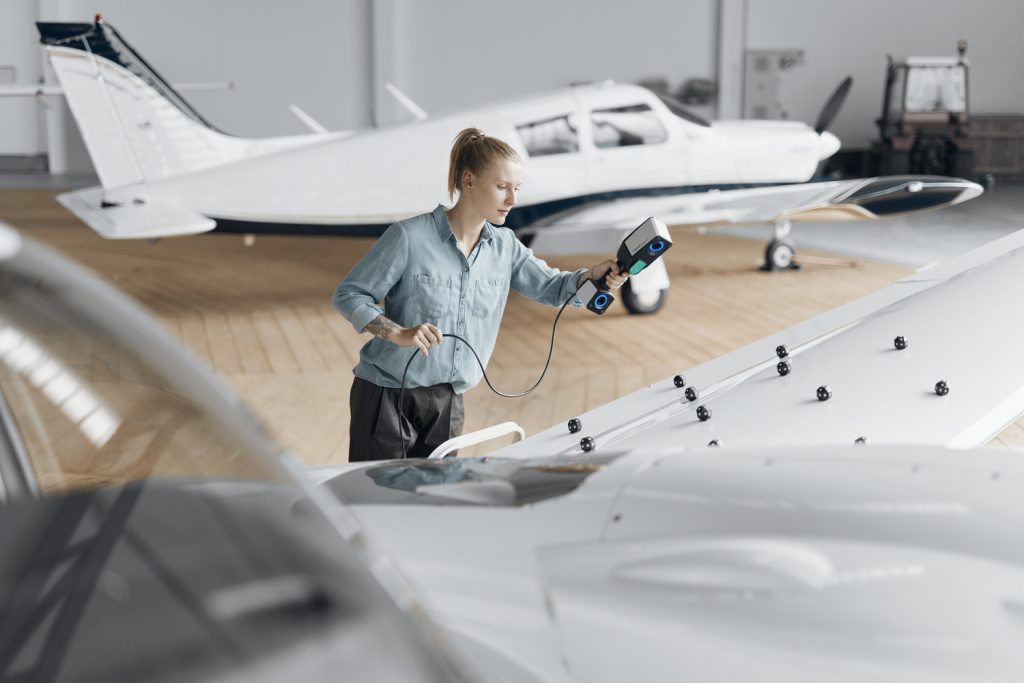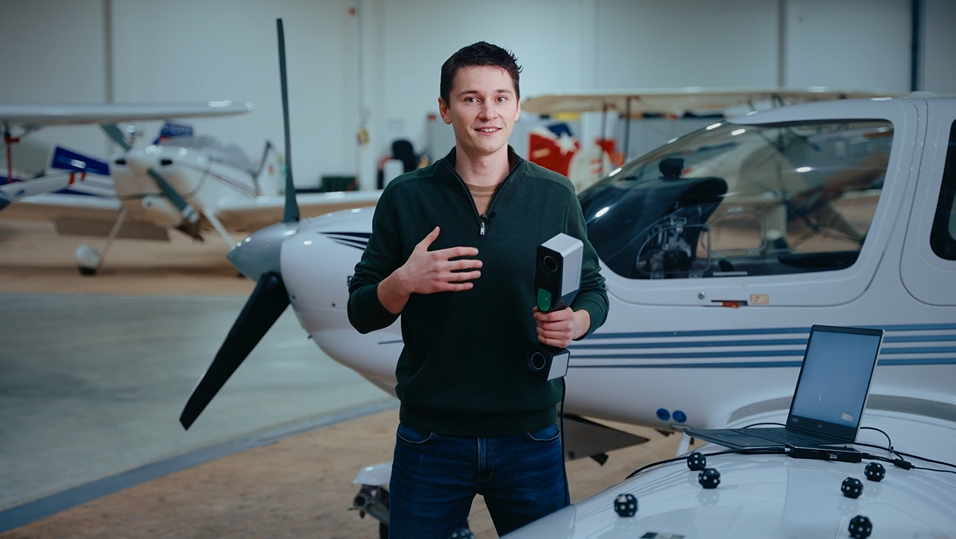Increase productivity for your planned and unplanned maintenance
Manual vs. digital MRO
Time expenditure as well as the areas to be inspected are decision criteria for the selected form of surface defect analysis.
Traditionally, MRO is done by hand. A long yet crucial process, the activity starting with a visual inspection by highly-skilled technicians who interrogate the surface for imperfections. When a defect is identified, the defect must be accurately checked for it’s length, width, depth and located from references, like a rivet row along a spa or stringer. Categorizing the defect and deciding whether it is acceptable or requires rework is all part of the responsibility, sometimes needing extra communication with airframers or design authorities before continue.
All this takes time and costs thousands of dollars per check and millions across the industry. If only there was a solution!
With the T-SCAN hawk 2, there’s a tool which can significantly streamline the checking of damage on aircraft. Whether it’s hail, foreign object damage (FOD), wrinkles from composites, or flushness of fasteners, the accurate 3D scanner enables quick, precise evaluation and decision making.
The T-SCAN hawk 2, is the one-stop-shop removing the need for the highly skilled set ups and use of gauging. The area of interest can be quickly scanned and evaluated reducing the activity from many hours to a matter of minutes. Communicating results is easy with the single button clicks to create report pages or with templates for a standardized, repeatable report for archives, records and decision making.
Using the digital way of quality control is the most efficient solution, minimizing aircraft ground time and maximizing revenue. Let’s have a look at how this works:

Portable 3D laser scanner for maximum precision and flexibility
So what makes T-SCAN hawk 2 the perfect companion for the next dent detection process?
Just a few strengths of the system:
1
Profit from the high flexibility of the T-SCAN hawk 2. The weight of under
1 kg is optimal for the use on site. Whether inspecting hard-to-reach areas or large surfaces, different scanning modes allow to scan every detail of your objects and on different operation locations.
2
Inspection processes are made easy with the guided workflow of the inspection software in the ZEISS Quality Suite. The remote control buttons on the sensor furthermore allow for optimal process control while scanning. No operation in the software necessary.
3
Evaluating possibilities for the collected 3D data are endless. Whether it’s CAD comparison, GD&T analysis or user-defined surface defect maps to classify dents – the automatically created mesh gets inspected in no time.
Learn more about the use for dent detection in our How-to with Roel:
How to use a 3D scanner for dent detection
Looking for a way to speed up and refine your aircraft MRO? Let Roel show you how the ZEISS T-SCAN hawk 2 and the Inspect Software aid in various inspection tasks, like GD&T, CAD comparisons or defect maps. Got any questions on 3D scanning? Contact us via support@HandsOnMetrology.com

